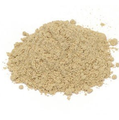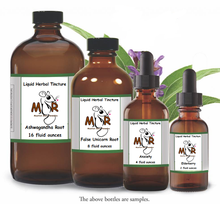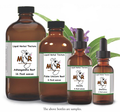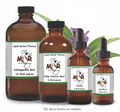 Loading... Please wait...
Loading... Please wait...- Home
- Herbal Tinctures
- Herbal Tinctures - Single Herbs
- Cat's Claw Bark Tincture
Cat's Claw Bark Tincture
Product Description
Cats Claw Bark Herbal Tincture
Also Known As - Uncaria tomentosa
Origin - Peru
Overview - Cat’s Claw is a climbing vine indigenous to the Amazon rainforest and other tropical areas of South and Central America, including Peru, Colombia, Ecuador, Guyana, Trinidad, Venezuela, Suriname, Costa Rica, Guatemala, and Panama. The name comes from the claw-like thorns that are used by the vine to climb high into the canopy of the rainforest. There are two main documented species of this plant and they share similar chemical make-ups (U. tomentosa and U. guianensis) Many Native Tribes in the South American Rainforest have used this herb medicinally but the Ashaninka of central Peru are one of the largest commercial producers of Cat's Claw and they as well as many other tribes have made the plant part of their medicinal and spiritual practice for over 2,000 years. Austrian researcher Klaus Keplinger learned about the plant from the Ashaninka, evaluated it in his lab, and then applied for US patents based on the isolation of certain chemicals (oxindole alkaloids) in the plant. Undoubtedly, this didn't change the native people’s value of the plant that value its spiritual virtues as highly as its medicinal properties.
Medicinal Uses - There have been several areas of interest in the research related to Cat's Claw, most notably the effects on the immune system and the inflammatory pathways in the human body. * The group of chemical compounds in Cat's Claw known as glycosides have been the center of much of the research investigating how this plant may promote a healthy inflammatory response.* The Oxindole Alkaloids seem to show the most promise in the understanding of how this plant helps to support the healthy functioning of the immune system. Once again we are reminded that people who neither knew or cared about these chemicals have found this plant to literally be a gift from god and have continued to use it.
Active Constituents - Oxindole alkaloids (isopteropodine, pteropodine, mitraphylline, isomitraphylline, rynchophylline, and isorynchophylline), triterpenes, proanthocyanidins, polyphenols, glycosides, beta-sitosterol, stigmasterol and campesterol
Parts Used - Inner bark.
Preparations - The part of cat’s claw that’s used for medicinal purposes is the bark. From dried bark, teas and infusions can be created. In addition, you can purchase cat’s claw in the form of a pill or a tincture.
Features and description:
- NON GMO!
- Gluten Free!
- Highest Strength Cat's Claw liquid extract!
- Cat's Claw liquid extract contains ONLY natural ingredients!
- High Quality Cat's Claw liquid extract - we use classic conventional methods of extraction! We meticulously produce our extracts according to precise standards where each herb is extracted according to the distinct characteristic of each plant!
- The highest quality Cat's Claw extract made with love for plants and respect for Nature!
- Strength: Dry plant material / solvents ratio 1:3
Precautions - Cat’s claw can interact with some medications, so it’s important to make sure you’re not taking something that would be conflicting such as anticoagulants, diuretics, and blood pressure medications.
Indications: Do not use if seal is broken or missing. Store in a cool dry place.
Safety information: Keep out of reach of children. If you are pregnant, nursing or taking any medications, consult your doctor before use. Discontinue use and consult your practitioner if any adverse reactions occur. Excessive consumption may impair ability to drive a motor vehicle or operate heavy equipment.
Suggested use and dosage: Shake well before use. Take 6-12 drops two - three times per day or as directed by your practitioner.
Disclaimer: The information presented herein by Mountain Maus’ Remedies is intended for educational purposes only. These statements have not been evaluated by the FDA and are not intended to diagnose, cure, treat or prevent disease. Individual results may vary, and before using any supplements, it is always advisable to consult with your own health care provider.
















